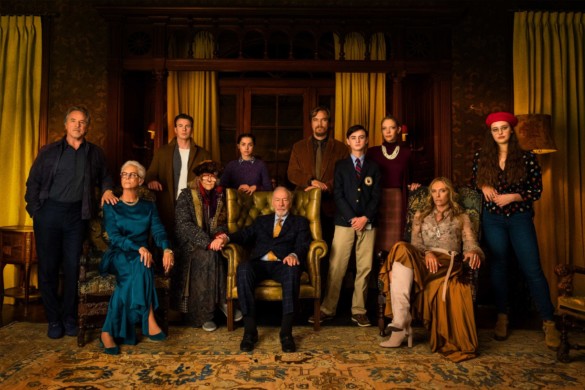By Kirsten Coachman
The star-packed “Knives Out” has arrived to stake its claim in the cinematic world of whodunnits. The thrilling new film, written and directed by Rian Johnson (“Star Wars: The Last Jedi”), revolves around the unexpected death of a famous and well-to-do crime novelist, Harlan Thrombey (Christopher Plummer), who was found dead in his home following a family celebration for his 85th birthday. On the case is Detective Benoit Blanc (Daniel Craig), who was recruited to look into any possible misdeeds surrounding Harlan’s death. At the center of his investigation are the surviving members of the Thrombey family, as well as Harlan’s caregiver and confidant, Marta Cabrera (Ana de Armas).
Audiences are transported into the privileged world of the Thrombey family as Detective Blanc’s investigation begins to unfold within the walls of Harlan’s impressive estate. Supported by the on-screen dynamic between the actors of this stellar ensemble, which also includes Chris Evans, Jamie Lee Curtis, Toni Collette, Michael Shannon, Don Johnson, LaKeith Stanfield, and Katherine Langford, it’s not hard to buy-in, especially as the Thrombeys deal with the existence of Detective Blanc as well as the extended time of being around one another. Ah, family.
“Knives Out” does a tremendous job at keeping audiences guessing while consistently bringing the laughs throughout its many twists and turns. The modern-day murder mystery is by far the most entertaining movie of 2019.
Earlier this month, Academy Art U News had the opportunity to sit down with Johnson to discuss his inspiration and writing process for “Knives Out,” assembling his all-star cast, and his advice for aspiring writers and filmmakers.
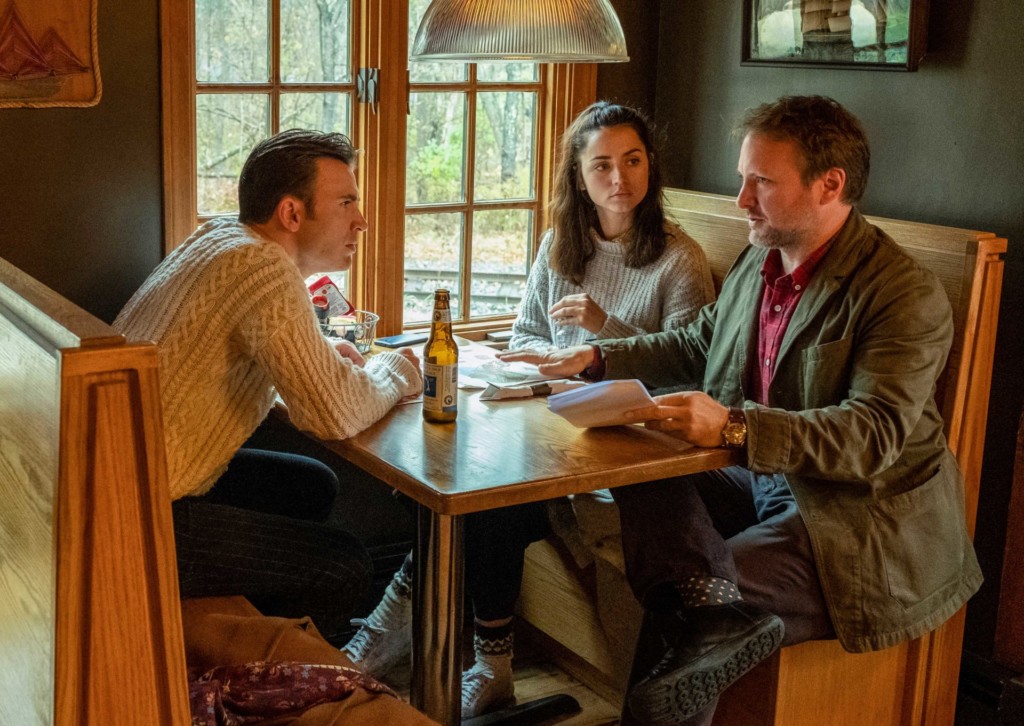
What inspired this particular story and the character Benoit Blanc?
It just started as simple as I want to do a whodunnit. It’s a genre I wanted to do forever, basically. It’s like comfort food for me. And then the idea of setting it in 2019 America seemed very interesting to me. I think so often when you see a whodunnit done, even a really great one, it’s done as a period piece because it’s an Agatha Christie adaptation, usually. So I liked the idea of, “Okay, new story, 2019,” that’s exciting.
I write really structurally; I don’t start with characters or specifics. I start just with kind of the skeleton of it, the shape. And for me, the skeleton of this movie was to have a whodunnit, but then to put the engine of a Hitchcock thriller in the middle of a whodunnit so that when you’re watching it, it’s not just a long buildup of gathering clues and trying to guess what happens at the end. We kind of almost tell the audience, don’t worry about that. Here’s a character you care about. They’re in danger. Now you can engage with this and we’re going to go on a ride together the next couple of hours and then hopefully still have the pleasures of a whodunnit.
Once I have that, I start zooming in bit by bit. So that’s when I came up with [this] Poirot-type detective and [thought], “What would that look like?” And that’s how I eventually got to Benoit Blanc. Figuring out for the needs of this particular story and what kind of detective would suit that.
How long was your writing process?
I had the idea for this about 10 years ago. And so I’ve kind of been chewing on it for a long, long while, but I only sat down to write last January and I wrote it really, really fast. I wrote it in six months, which for me is really quick. And I don’t think that’s actually fast for a real screenwriter, but for me, for a charlatan like myself, that’s actually quite quick. Then we had wrapped the movie by the end of the year. So the whole thing happened really, really quick. It just blazed, it happened so fast.
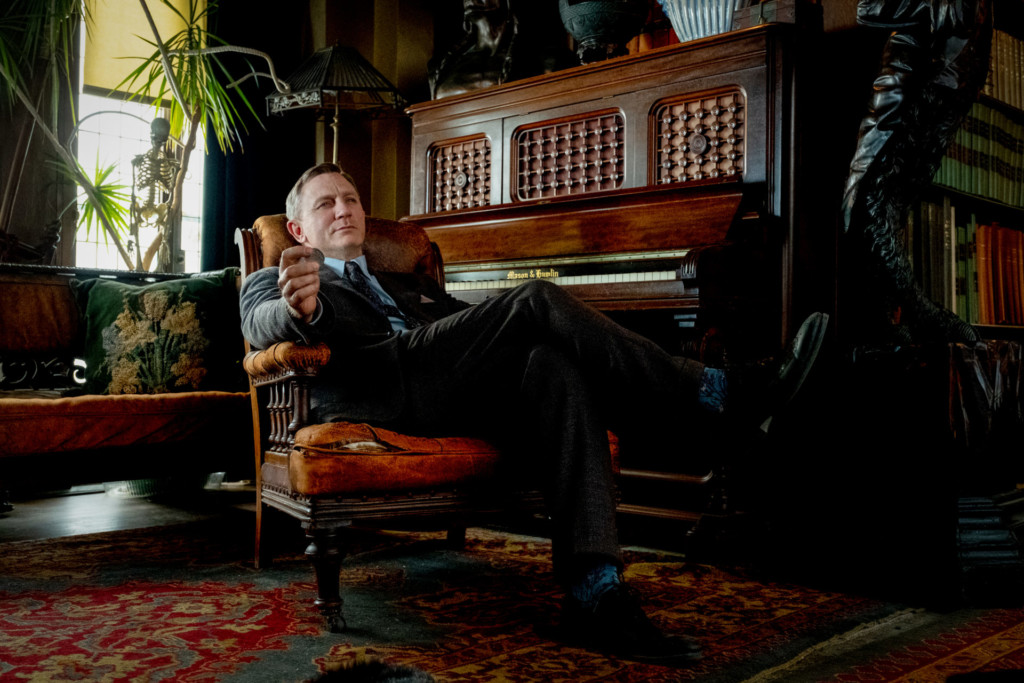
When you’re writing, being that the movie has both comedic and also dramatic moments, how do you go about kind of balancing those out and deciding when to tip your hand to the audience and give them a little bit to hang onto as the story progresses?
In terms of the tone—that’s a good question—that was one of the big things when we came into it that we had to get clear with everybody. First, when I was showing the script around to producers and we were trying to get the money, but then also when I was talking to the cast. The big question was always like, “Okay, tonally where does this really lie?” And I was really clear that this was going to be fun. It was going to have a lot of humor, but this isn’t “Clue” or a “Murder by Death.” This isn’t a parody of whodunnits, this is a real attempt at the genre, which means we have to be grounded constantly through the whole thing. Really, so much of that comes down to the actors.
When you have great actors like this, I think it takes a really good actor to be able to give as big a performance as a lot of the people in this movie are giving and not have it disconnect from the planet Earth, still have it feel grounded enough to where it works as a story and it doesn’t feel like a parody, like a Mad Magazine whodunnit. That was a big part. And then in terms of what you said in tracking where the audience’s perception is and what they’re getting at different times. I think for me, the only way, writing-wise, to do that and stay sane is to just track scene to scene whose eyes we’re seeing the story through and to think about it in terms of individual characters’ perspectives at any given moment as opposed to thinking globally about the audience’s perspective.
One of my favorite parts of this movie is Marta’s tell. Where did the idea for that come from?
I love that you call it “a tell.” It’s exactly that. Once I figured out we’re going to care about Marta, hopefully, she’s going to be in this position where the only way she can get out of this terrible situation is by lying. Then of course, as a writer, you want to make things as hard as possible for your character. So let’s take away the ability for her to lie. There’s that great scene in “House of Games,” the Mamet movie, where they talk about people having tells for when they lie and it’s usually like their eyes blink twice, or they touch their nose, or they twist their ring. And so I was thinking of things like that, and then I thought, “Well, given the tone of this movie, what’s something a little splashier, so to speak, that we can write?” [laughs] And so I thought, “Well, maybe she pukes when she lies and she can’t hide that, so that would be fun.”
You’ve got this great ensemble, and what I really liked about this cast is that you have a lot of actors that are playing against type—whether it’s Daniel Craig, who we usually see as James Bond or Chris Evans as Captain America. What’s exciting about working with an ensemble like this and what does it mean to you to have actors that are willing to push themselves and embrace these characters?
For me, first of all, it makes my job just so much fun. It makes it easy and fun when you have actors of this caliber coming into something like this. But also, every single one of these people is just at the top of their craft. And to me, there’s nothing more fun than working with an actor that I’ve always wanted to work with that I know is incredibly skilled and then giving them something to do that I haven’t quite seen them do before. ‘Cause that means I’m going to be surprised on set and that’s going to be fun.
Daniel and Chris are maybe the two biggest examples of their recent work having the audience thinking about them one way and this is a very different type of thing. [Seeing] Daniel in “Logan Lucky,” and I’d met him before, I knew he had a great sense of humor, but if you just know him from Bond, you might think he’s a very serious, stern person that he’s not at all. He’s super, super fun. So I knew that, and Chris, I had seen do a variety of stuff. I saw him in this Kenneth Lonergan play, “Lobby Hero.” I saw him playing a jerk in that and they’re great actors with great range. I just had no doubt; I was excited to see what it would look like when tackling something like this.
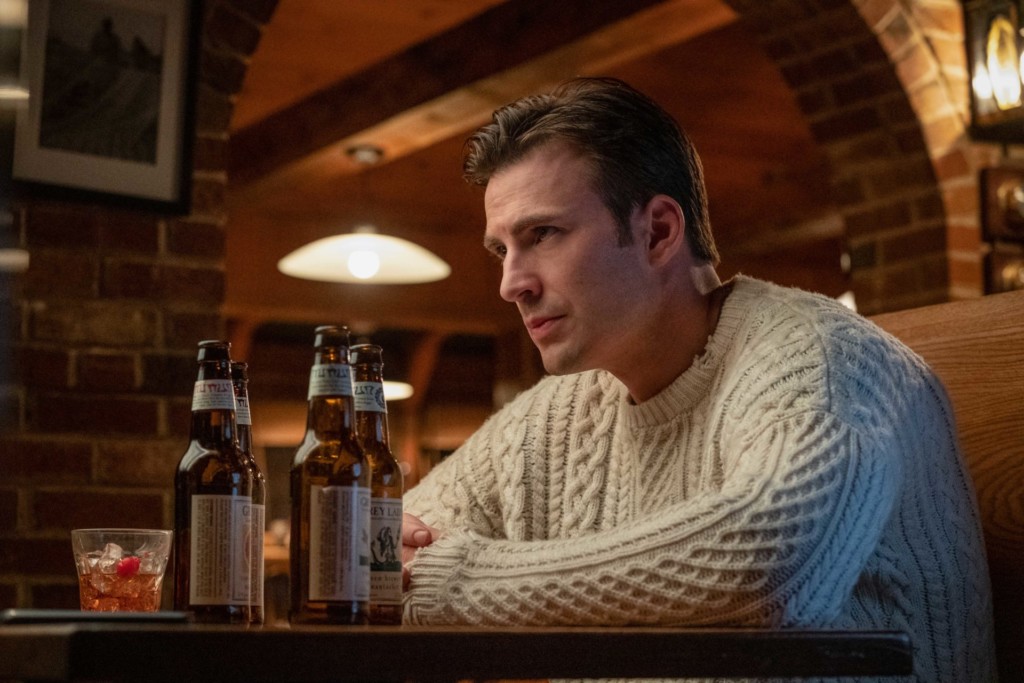
To me, this is a family that feels lived in. Was the cast ever given a little bit of free rein to play off of each other at all?
During the big family arguments scenes—I come from a big family myself too—and they’re nothing like the family. My family is lovely, but we do have big family arguments all the time. [laughs] And I’m glad that feels authentic, but because of the nature of the movie, it’s very much like a jigsaw puzzle. So it’s not like you can get in and just wing it. But when everyone’s yelling at each other and they’re all throwing insults back and forth, then I would just keep the cameras rolling and just let them go. It was funny to see who ended up being like the VIP in terms of throwing out hilarious stuff, like Michael Shannon you think of as a very dramatic actor. He had some of the best, just ridiculously hilarious lines that he would throw out. “I’m not eating one iota of sh–.” He’s really, really funny. Or Toni Collette. She was yelling at Marta like, “I’m not on Twitter anymore. DM me on Instagram.” That was all her. They had fun.
One thing I noticed, there was oftentimes something going on in the background of the scenes. As far as assembling almost a scene within a scene, how did that develop in the course of putting the film together?
A lot of times that stuff is in the script; it’s like your focus is on something while somebody secretly is doing something in the background. And that’s always fun to stage. I love scenes where multiple layers of things are happening at once. If you look at classic Hollywood films, if you watch Michael Curtiz movies, building a depth into frames, building multiple layers of things going on in frames is something that the great directors always did. The easy kind of default thing is just do close up, close up, close up, close up of what’s happening. To me, it’s much more interesting if you can have a frame where there are multiple things happening at once and orchestration and mise-en-scène and the whole shebang. That, to me, is just a lot more fun.
Where did you find Harlan’s house and what did you communicate to your production designer about the overall kind of look and vibe you were looking to create?
We found it while I was still writing the script, my producer had started scouting houses and basically, we wanted the murder mystery mansion of the mind. We wanted just what you picture when you hear the words murder mystery mansion. And we found this house just in the middle of Massachusetts, it’s like a few hours South of Boston. And it was perfect. We were like, “Well, I guess we’re going to Massachusetts.” We shot inside and outside the house. There’s a couple of sets that we built for some of the really specific interiors, some of the upstairs stuff. And the library is in another mansion nearby. It’s not in that one, but we shot a lot of indoor/outdoor for that house. And it was just perfect.
My production designer, David Crank, who’s amazing, he collaborated with Jack Fisk on Paul Thomas Anderson’s movies and on Terrence Malick’s movies, he’s an incredible artist, but he and the set decorator David Schlesinger, they collaborated to fill that house up with all of this. The reference I gave them was one of my favorite movies, the 1970s film “Sleuth,” with Laurence Olivier and Michael Caine. Which is also set in a mansion that is owned by an eccentric mystery writer and it’s almost like the mansion is the inside of his brain. And that was the whole idea, we’re inside Harlan’s head, so go nuts and fill it up. And what they created was just so rich and so beautiful. I can still watch it and pick stuff out that I hadn’t even seen before in the background.
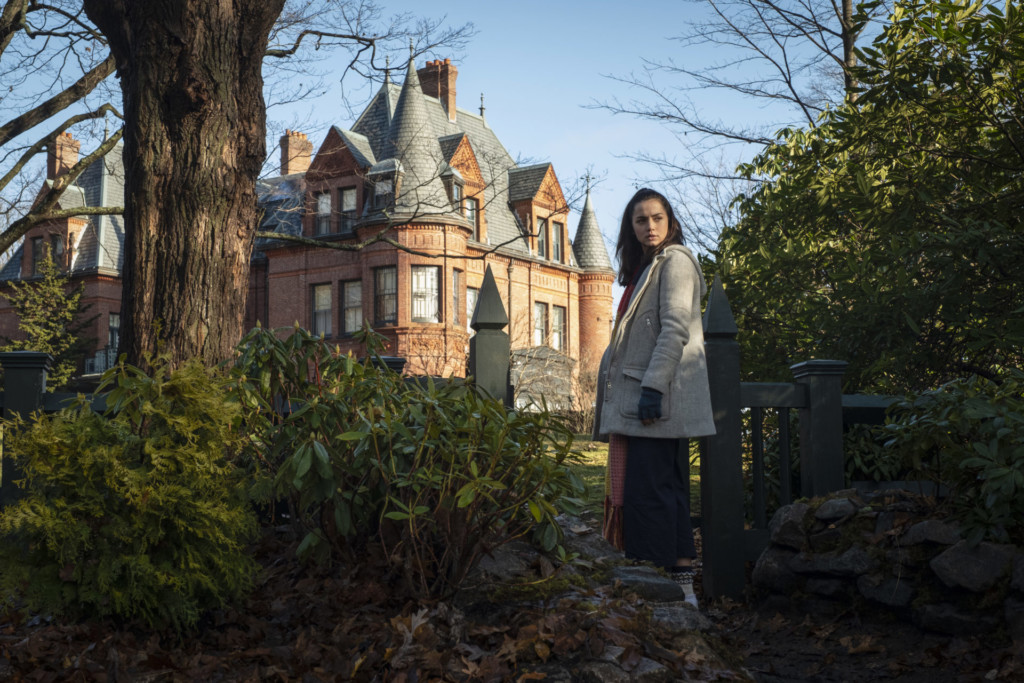
At the Academy, we have programs for both writing and directing. What kind of advice do you have for students that are aspiring film writers and directors?
If you want to write and direct, I guess the only advice that I think is really useful, even though it might be frustrating to hear, is just make, make, make movies, just keep making movies. Don’t get caught up in the notion of “how do I break into the industry?” Just keep making your own stuff and keep developing your voice with whatever resources you have available to you in that moment.
If you’re a writer, you’re lucky because you have a computer to type on and that’s all you need, so just keep writing stuff. If you’re a filmmaker though, shoot with your iPhone, man. Just get a couple of friends together and make a short over the weekend. Put it online and get it out there and keep posting it and keep trying to get it in front of people. Me personally, I’m probably the wrong person to ask in terms of getting your first feature made, because it took me eight years out of college to get “Brick” made. [laughs]
But the main thing is no matter how you end up getting there, the only way that the “there” is going to exist is if you have developed your voice and if you have something interesting to say. So beyond just making stuff and getting better at behind the camera, also living life, reading great books, meeting people, traveling, having experiences, building up that well inside of yourself, which is what you’re actually going to be drawing from when you make anything. That goes beyond getting better at camera angles and blocking and all that stuff. If you’re going to be a director, and if you’re especially going to be a writer, figuring out what you want to talk about and what you want to say, that’s just as much your job as anything else.
“Knives Out” is now playing in theaters.
This interview has been edited for length and clarity.
